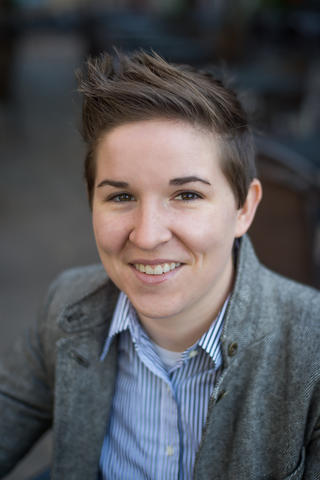
Martha Streng, Ph.D.
E-MAIL: [email protected]
Research Interests:
I am primarily interested in the encoding of information by populations of cerebellar neurons, how they contribute to healthy behavior, and how they are disrupted in disease states. While the cerebellum is classically considered a motor control structure, it has ever-emerging roles in extra motor behaviors and neurological disorders. In the case of epilepsy, cerebellar dysfunction could have major implications for patients, as cerebellar alterations predict comorbidities and negative outcomes in patients with epilepsy. A major challenge in cerebellar physiology is that while the cerebellar cortex has a highly conserved, stereotypic cytoarchitecture, with a precise spatial organization of inputs and outputs, we lack a clear understanding of how this spatial organization relates to the specific computations performed by cerebellar neurons. My laboratory utilizes wide-field optical imaging and intersectional approaches for circuit dissection in rodents to characterize cerebellar dynamics at the network level. We are examining how functional networks of cerebellar neurons are engaged during healthy behaviors, such as reaching or locomotion, but also how they are disrupted in disease states like epilepsy. Our ultimate goal is to link the structural composition of the cerebellar cortex with its functional organization and underlying fundamental computations.
Publications
- Streng ML, Carter RE, Kottke BW, Togneri K, Wasserman E, Rajendra V, Kodandaramaiah SB, Krook-Magnuson E, Ebner TJ. Mesoscale Ca2+ imaging reveals networks of Purkinje cell dendritic and somatic modulation, with divergent roles of activity versus correlation during behavior. bioRxiv 2023. 10.05.561090; doi: https://doi.org/10.1101/2023.10.05.561090
- Streng ML, Froula JM, Krook-Magnuson E. The cerebellum’s understated role and influences in the epilepsies. Neurobiol Dis. 2023 Jul;183:106160.
- Nietz AK, Streng ML, Popa LS, Carter RE, Flaherty E, Aronson JD, T.J. Ebner TJ. To be and not to be: Wide-field Ca2+ imaging reveals neocortical functional segmentation combines stability and flexibility. Cereb Cortex. 2023 May 24;33(11):6543-6558.
- Wide-field calcium imaging of neuronal network dynamics in vivo. Biology (Basel). 2022 Nov 1;11(11):1601.
- Cerebellar representations of errors and internal models. Cerebellum. 2022 Oct;21(5):814-820.
- Streng ML, Tetzlaff M, Krook-Magnuson E. Distinct fastigial output channels and their influence on temporal lobe seizures. J Neurosci. 2021 Dec 8;41(49):10091-10107.
- Epilepsy Behav. 2021 Aug;121(Pt B):106909.
- Excitation, but not inhibition, of the fastigial nucleus provides powerful control over temporal lobe seizures. J Physiol. 2020 Jan;598(1):171-187.
- Complex spike wars: a new hope. Cerebellum. 2018 Dec;17(6):735-746.
- Modulation of sensory prediction error in Purkinje cells during visual feedback manipulations. Nat Commun. 2018 Mar 15;9(1):1099.
